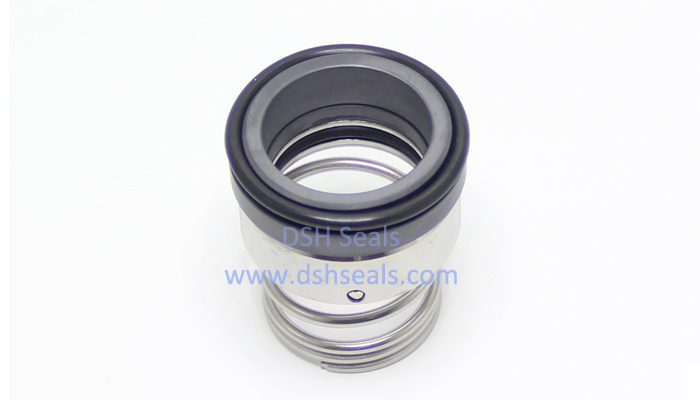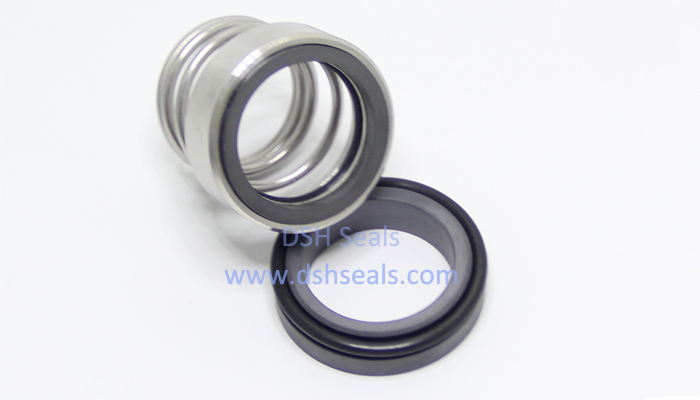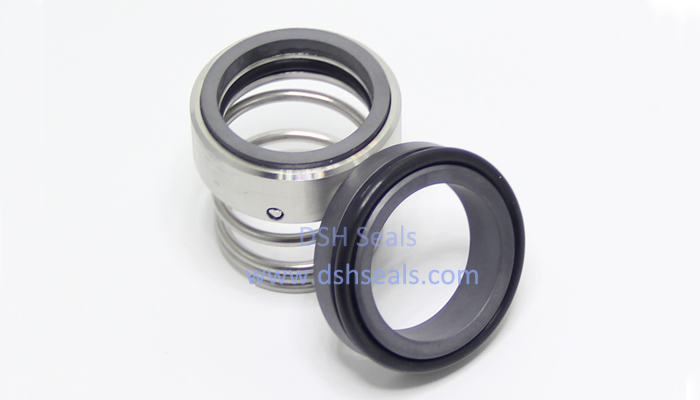Product Series
News
Mechanical seal wear
Update:2018-10-27
Wear is a form of failure that occurs frequently with mechanical seals. It is an important issue to grasp the wear law of the contact type mechanical seal, predict the wear rate, and try to extend the wear life.
Possible forms of wear on the friction surface are: adhesive wear, abrasive wear, fatigue wear, fretting wear, and corrosion wear.
1. Adhesive wear of mechanical seal
Due to the presence of rough microprotrusions on the surface, surface contact occurs at the dispersed microprotrusions. When the friction occurs, the contact point occurs. When the lubricating film and the surface film are broken, direct contact between the metals occurs, and the connection point is continuously sheared and a new connection point is generated.
If shear occurs at the junction interface, there is no wear on both surfaces; if shear occurs inside the metal, surface metal transfer occurs and the surface is damaged and worn. Metal transfer is a major feature of adhesive wear.
2. Abrasive wear of mechanical seal
Abrasive wear is the most common form of wear, accounting for about half of the total wear. Abrasive wear is when the contact surface is in relative motion, the surface is scratched by the hard particles or the microprotrusions on the surface during the rubbing process and the surface material is peeled off.
Abrasive wear is a "microscopic cutting process." The abrasive causes the surface layer material to undergo alternating deformation, resulting in alternating contact stress causing fatigue damage to the surface. However, the mechanical action of the abrasive particles on the surface is always dominant.
3. Fatigue wear of mechanical seal
The friction surface is subjected to alternating stress, and the surface material is destroyed by fatigue. This type of failure often occurs in parts such as gears and rolling bearings.
Fatigue cracks may occur at the maximum shear stress below the contact surface because the plastic deformation is most severe. The crack that first appears will expand toward the surface along the direction of the maximum shear stress, eventually causing fatigue wear.
The transfer of material due to the fatigue of the surface material caused by the alternating stress is called fatigue wear, sometimes called contact fatigue.
4. Fretting wear of mechanical seal
The phenomenon of wear between the faces due to the relatively small amplitude of the relative vibration is called fretting wear. If this fretting wear occurs during the process in which the chemical reaction between the two surfaces plays a major role, it is called fretting corrosion wear.
If there is a certain pressure between the surfaces in contact with each other to make the surface microprotrusion adhere, the adhesion is continuously sheared due to the vibration caused by the small amplitude of the outside, and the adhesion point is gradually oxidized during the shearing process, which may occur.
Reddish brown iron oxide grinding debris. This process continues, the oxidized abrasive chips are separated from the body, and the adhesion points are destroyed. At the same time, the abrasive particles also act as abrasives, causing abrasive wear on the contact surfaces, and finally causing contact surfaces when the wear regions are continuously enlarged. Completely destroyed. This is the mechanism by which fretting wear forms.
5. Corrosion wear of mechanical seal
The wear process of a surface mainly under chemical or electrochemical reactions is called corrosion wear. Generally, during the corrosion process, the wear is moderate. However, due to the corrosive effect, very serious results can be produced, especially in high temperature or humid environments.




